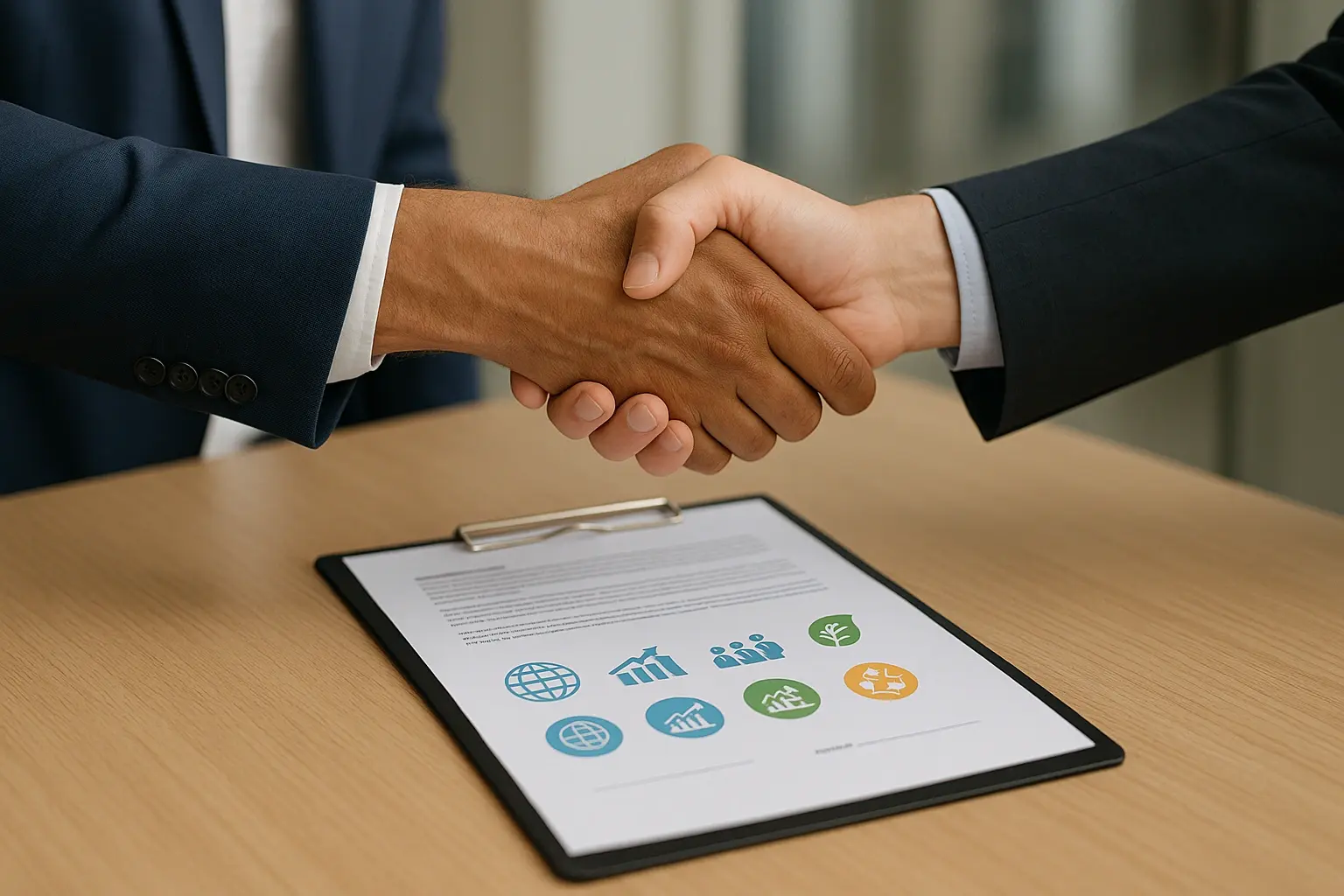
Partnerships as the key to sustainable transformation
SDG 17 (‘Partnerships for the Goals’) is the 17th United Nations Sustainable Development Goal and links all the other goals together. It calls for cooperation across industries, sectors and national borders. An SDG 17-based certificate or corresponding award is granted by various organisations that use SDG 17 as a guideline, such as national UN Global Compact networks or specialised sustainability initiatives.
Important: There is no single, official awarding body within the United Nations. Each certification is based on its own criteria – what they have in common is that they commit a company to a sustainable partnership culture.
Practical example: Certification by Bureau Veritas
Bureau Veritas is an internationally renowned certification body that supports companies in embedding the UN SDGs – including SDG 17 – into their business models. The process begins with training courses and practical tools, followed by workshops in which goals are defined jointly.
This is followed by a comprehensive screening: auditors analyse how well the SDGs are already embedded in strategies, processes and partnerships. They examine not only what is being done, but also how partnerships are being implemented – whether goals are being developed jointly, resources shared and synergies exploited.
Based on this analysis, Bureau Veritas draws up a detailed improvement plan. Only when this process has been completed does official certification follow. The result is not a static status, but a documented roadmap for further progress.
What companies need to do to achieve this
Although requirements vary depending on the awarding body, the core principles can be clearly defined:
• Enter into relevant partnerships – with companies, NGOs, authorities, research institutions or international organisations.
• Define clear sustainability goals that are directly linked to the UN SDGs.
• Achieve measurable impact – both ecological and social.
• Ensure transparency and reporting – including public presentation of progress.
• Demonstrate long-term commitment – not one-off actions, but strategically designed collaborations.
Why commitment is at the heart of it all

Many sustainability labels merely confirm that a company meets certain standards. An SDG 17-based certificate goes further: it is a promise – to partners, to the public and to the company's own team – to act in line with shared goals on a long-term basis.
Former Unilever CEO Paul Polman sums it up succinctly: success is measured by ‘giving more than you take’. This is precisely what SDG 17 is all about: companies commit to forming partnerships that have an impact beyond their own benefit – whether through knowledge transfer, access to networks or joint investment in sustainable innovations.
This makes the commitment challenging: it cannot be achieved with a single measure, but must be reflected in every strategic step.
Cooperation as a strategic lever
Sandrine Dixson-Declève, Co-President of the Club of Rome, sees SDG 17 as a key lever for transforming our economic systems. She believes that partnerships are only effective if they are based on mutual trust, long-term responsibility and genuine resource sharing.
For companies, this means thinking of cooperation not as a ‘project’ but as a permanent element of value creation. A supplier can thus become an innovation partner, a competitor an ally in an industry initiative, an NGO a bridge to new markets.
Such partnerships open up new business opportunities – and at the same time strengthen a company's social acceptance and reputation.
A continuous learning process
Marilyn Mehlmann, founder of Legacy17, views SDG 17 as a learning system: partnerships are not static, but evolve. This means that companies seeking such certification must not only cultivate external collaborations, but also adapt their internal culture.
Employees should be empowered to actively engage in cooperation – for example, through interdisciplinary projects, training courses or exchanges with partner organisations.
This creates a cycle of learning, adapting and improving, which not only maintains the certificate in the long term, but also brings about real change.
Conclusion
An SDG 17-based certificate is not a seal of approval that can be achieved in the short term, but rather an expression of a long-term commitment. It requires courage, openness and a willingness to work with others on sustainable solutions – not just to receive an award, but to make a real contribution to overcoming global challenges.
And that is precisely where its particular strength lies: it not only highlights what a company does, but above all how consistently it lives up to its partnerships.